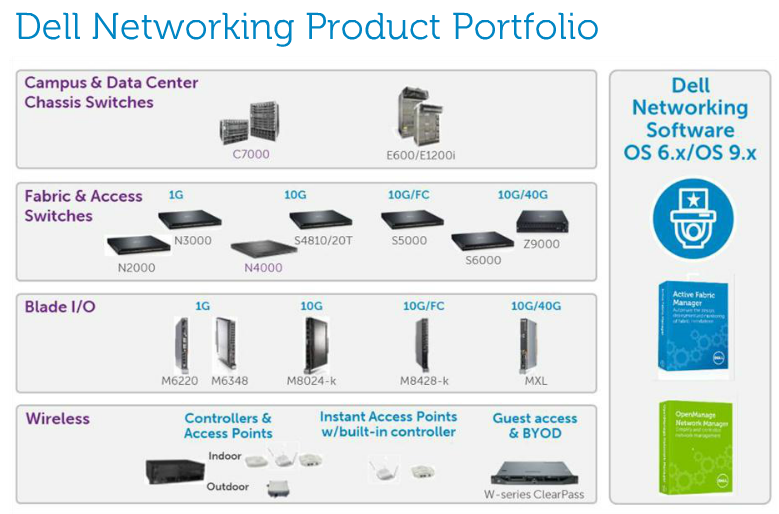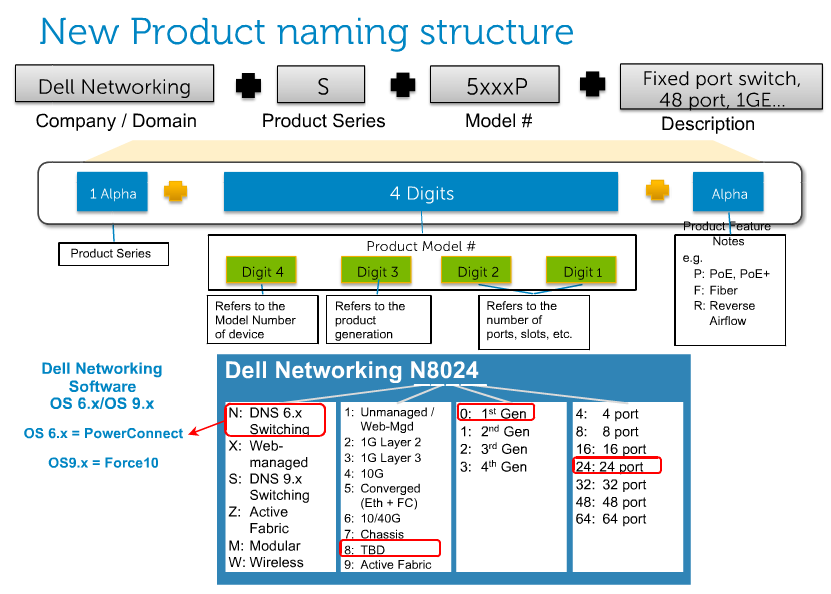Dell’s networking portfolio was historically made by a Dell PowerConnect series for the switches in the SMB and mid-size target and the PowerConnect-W for the wireless offer. Some years ago there was also a PowerConnect-J series with the (temporally) partnership with Juniper (before the Force10 acquisition).
The Dell Force10 was positioned in the top of the networking offer with several products both for the traditional networking approach (core, aggregation and access) and also for the emerging model (leaf-spine).
But recently the entire networking family has been re-organized and renamed with new names, a clear positioning for each product, a “common” firmware and common management tools. Force10 and PowerConnect are all been merged in a common Dell Networking products portfolio:

Firmware from PowerConnect and Force10 was already similar in some commands (and command line is quite similar to the Cisco IOS standard de facto), but each product previously had its own firmware (also for different Force10 there were, in most cases different firmware).
Now all Dell Networking devices share a common Dell Networking OS, but note that there are two different braches of this OS:
- OS 6.x that is mainly the old PowerConnect firmware evolution
- OS 9.x that is the evolution of the Force10 firmware
Anyway is the first step to reach a common Platform and a unique framework.
The name itself of each device has been changed to have unique way to identify each device and also have a simply way to identity the characteristics:

New firmware and new names probably will bring some confusion in this initial phase (considering also that old models are still presents in some offers). Also could be useful have a clear migration plan that include also the migration of some extra components (like external power supplies, SPF or SPF+ modules, stacking modules, …).
Also the price list is not necessary a 1:1 mapping with previous version and in some cases that gap could be pretty huge, so be careful to identify the best solution that fit your requirements.












